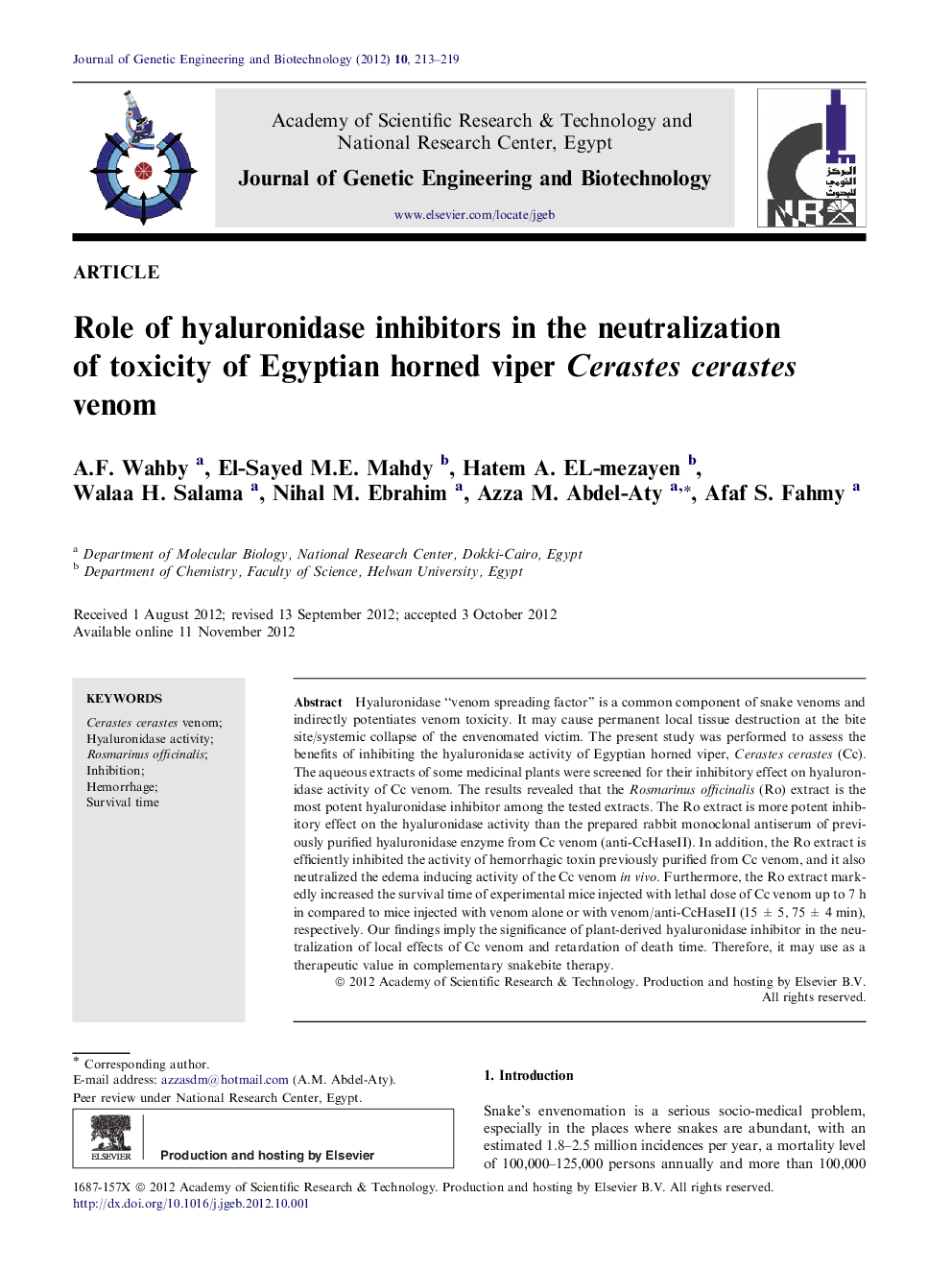| کد مقاله | کد نشریه | سال انتشار | مقاله انگلیسی | نسخه تمام متن |
|---|---|---|---|---|
| 2087932 | 1545575 | 2012 | 7 صفحه PDF | دانلود رایگان |

Hyaluronidase “venom spreading factor” is a common component of snake venoms and indirectly potentiates venom toxicity. It may cause permanent local tissue destruction at the bite site/systemic collapse of the envenomated victim. The present study was performed to assess the benefits of inhibiting the hyaluronidase activity of Egyptian horned viper, Cerastes cerastes (Cc). The aqueous extracts of some medicinal plants were screened for their inhibitory effect on hyaluronidase activity of Cc venom. The results revealed that the Rosmarinus officinalis (Ro) extract is the most potent hyaluronidase inhibitor among the tested extracts. The Ro extract is more potent inhibitory effect on the hyaluronidase activity than the prepared rabbit monoclonal antiserum of previously purified hyaluronidase enzyme from Cc venom (anti-CcHaseII). In addition, the Ro extract is efficiently inhibited the activity of hemorrhagic toxin previously purified from Cc venom, and it also neutralized the edema inducing activity of the Cc venom in vivo. Furthermore, the Ro extract markedly increased the survival time of experimental mice injected with lethal dose of Cc venom up to 7 h in compared to mice injected with venom alone or with venom/anti-CcHaseII (15 ± 5, 75 ± 4 min), respectively. Our findings imply the significance of plant-derived hyaluronidase inhibitor in the neutralization of local effects of Cc venom and retardation of death time. Therefore, it may use as a therapeutic value in complementary snakebite therapy.
Journal: Journal of Genetic Engineering and Biotechnology - Volume 10, Issue 2, December 2012, Pages 213–219